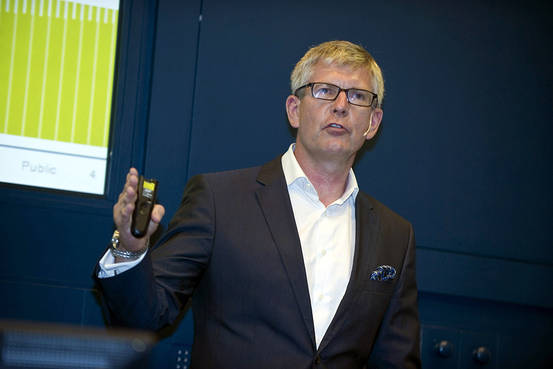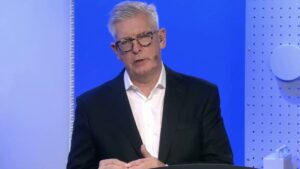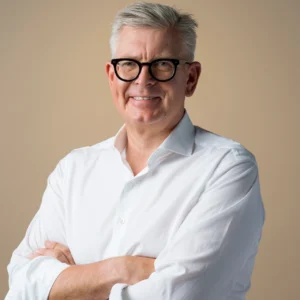
Ericsson CEO Börje Ekholm Steers Company Through 5G Expansion and Global Challenges 2025

When Börje Ekholm stepped into the role of CEO at Ericsson in January 2017, the telecommunications industry was already buzzing with anticipation for the next big leap—5G. Fast forward to today, and Ekholm has not only kept Ericsson at the heart of that transformation, but has also become one of the most outspoken leaders on global tech policy, regulatory reform, and the race for digital dominance.
From boardrooms in Europe to field operations in India and North America, Ekholm has been navigating a course that blends aggressive innovation with strategic diplomacy. His leadership is marked by both bold moves in the market and candid critiques of the environments that shape it.
Let’s dive into how he’s shaping Ericsson’s role in a rapidly evolving world—and why his approach matters not just for the company, but for the global future of connectivity.
Tariff on U.S.
A Vision Rooted in 5G Leadership

Ekholm’s arrival at Ericsson came at a time when the company needed clear direction. Struggling with financial challenges and fierce competition, Ericsson needed a leader who could not only stabilize the business but also position it as a frontrunner in emerging technologies.
Ekholm delivered.
Under his leadership, Ericsson pivoted hard into 5G development. With strategic investments in R&D, Ekholm pushed the company to lead in the global rollout of 5G infrastructure. Today, Ericsson has signed over 160 commercial 5G agreements across the world, making it one of the top global vendors in the space alongside Nokia and Huawei.
In a 2019 press release, Ekholm made Ericsson’s goal clear: “We will switch on 5G globally.” And that’s exactly what the company has been doing—building the backbone of the next-generation internet.
Europe’s Digital Lag—and Ekholm’s Wake-Up Call

While Ericsson is headquartered in Sweden, Ekholm hasn’t held back from criticizing Europe’s sluggish progress in digital infrastructure.
In multiple interviews and appearances, including at the World Economic Forum and through media outlets like the Financial Times, Ekholm has issued stern warnings: Europe is falling behind.
His main concern? Regulation.
Ekholm argues that overregulation in Europe is stifling innovation, slowing 5G deployment, and putting the continent at risk of becoming irrelevant in the global tech race. He points to more nimble markets like the U.S. and China, where regulatory environments are better aligned with fast-paced innovation.
“We are overregulated,” he said bluntly in a recent FT interview. “And if we continue on this path, Europe will be a follower—not a leader—in digital development.”
India: A Digital Dark Horse

While Europe drags its feet, another story has caught Ekholm’s attention: India.
In a move that surprised many, India has leapfrogged much of the world in terms of 5G rollout. Ekholm has repeatedly praised the Indian government and telecom partners for their swift action and forward-thinking policies.
“India is ahead of the world in 5G deployment,” Ekholm told The Wall Street Journal during Davos 2023. “It’s building a digital infrastructure that will rival China’s.”
This optimism is backed by Ericsson’s growing presence in India, where it is actively involved in large-scale 5G deployment projects. For Ekholm, India is not just a growth market—it’s a model of what’s possible when public and private sectors work together toward digital transformation.
Strategic Shift to High-Growth Regions

With Europe stagnating, Ekholm has smartly shifted Ericsson’s focus to markets where growth is accelerating.
North America continues to be a key area for 5G expansion, and Ericsson has secured major contracts with telecom giants like Verizon and AT&T. In Asia, aside from India, countries like South Korea and Japan are pushing hard on next-gen networks, offering further opportunities for expansion.
This global balancing act is no easy feat. But Ekholm’s strategy is clear: double down on regions that are ready to move forward—and be vocal about the need for change in regions that aren’t.
The Road Ahead

Ekholm has shown that leadership in tech isn’t just about engineering or market share—it’s also about speaking up.
In a time when geopolitical tensions, cybersecurity concerns, and digital sovereignty dominate global headlines, CEOs like Börje Ekholm are stepping into roles that blur the lines between business and policy. His ability to navigate global challenges while staying focused on Ericsson’s mission has not only helped the company recover from past troubles—it’s given it a renewed sense of purpose.
Whether he’s advocating for faster 5G deployment, calling out regulatory hurdles, or exploring partnerships in untapped markets, Ekholm remains a steady hand steering Ericsson through one of the most transformative periods in tech history.
Final Thoughts

Börje Ekholm’s leadership offers a compelling case study in how to guide a legacy company through disruption. While Ericsson still faces stiff competition and complex global dynamics, it has one major advantage: a CEO who understands both the technology and the broader landscape it operates within.
In an era defined by speed, connectivity, and digital ambition, that might be exactly what the world needs.





